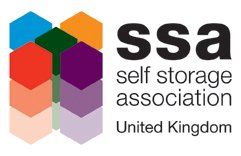Case Study
To be thorough or not to be thorough, that is the question
The Background
When selling or disposing of abandoned goods, the first thing the SSA MAP says is “take a good inventory”. The actual advice is as follows: “It is important that the Facility Owner takes a thorough inventory of goods before selling or disposing of these goods. Recent legal actions have indicated that “closed box auctions” and poor inventory (i.e. recording in an imprecise way, such as “7 boxes of mixed household items”) will not be looked at favourably if the process is challenged and may result in an adverse finding for a business...”
We are aware that there is inconsistency in the quality and thoroughness of inventories in the sector. Some take a responsible approach and lead by example but for those that don’t we decided to test some theories. We believe that preparing thorough inventories prior to the sale of goods achieves two things: • It generates higher selling prices for the room contents • It minimises the risk to your business if challenged.
The Case Study
We bid for and acquired the contents of a 35 sqft room where it was clear that a thorough inventory had not been prepared. We removed the items to our own storage facility, completed a thorough inventory, took extensive photos, removed all personal and sensitive items and then created our own auction for exactly the same items. The findings were as follows:
- Headline sale price was 35% higher
- Online auction platform fees were 58% lower
- All potentially sensitive information was removed (see below and ask yourself if you would be happy for your business to be selling such data in a similar care-free manner).
In short, if you are selling abandoned goods being thorough in your preparation for the sale will:
- Generate additional sale proceeds and enhance your debt recovery
- Minimise the risk to your business at the same time.
The Personal Effects
So, to that sensitive personal information. Being thorough means going through every, bag, box, cupboard or drawer in the room. If you do that you can identify sensitive items that you would not want to sell to a stranger. Having completed a thorough inventory of our test purchase we finished with 4 bags, a document box and a small crate of personal and sensitive items. At the end of this process we could tell you the following about the customer:
Their name, date of birth, current and 2 previous addresses, bank account name/sort code/account number, mobile phone number, email address, national insurance number, their employment history, tax reference details, user name and password for online access.
We found medical notes relating to their depression, bi-polar, inclination to self-harm and a psychiatry report. Family court papers noting concerns of domestic violence, drug/alcohol/substance abuse, child neglect and prostitution. Documentation regarding suspected criminal offences including names of alleged offenders and victims. A court letter relating to witnessing a sex act by a named party. Police charge sheet, search warrant, driving whilst disqualified notice, prison letters. Blood samples, photos, bank statements, a CV and a P45. We could also tell you the following about the customer’s parents: Their names, address, home telephone number, mobile telephone number and email addresses. We also found this in relation to the customer’s child: Name, date of birth, NHS number, photos, school books and folders.
This room is not untypical of what we find on a regular basis in the abandoned storage rooms we complete thorough inventories for.

